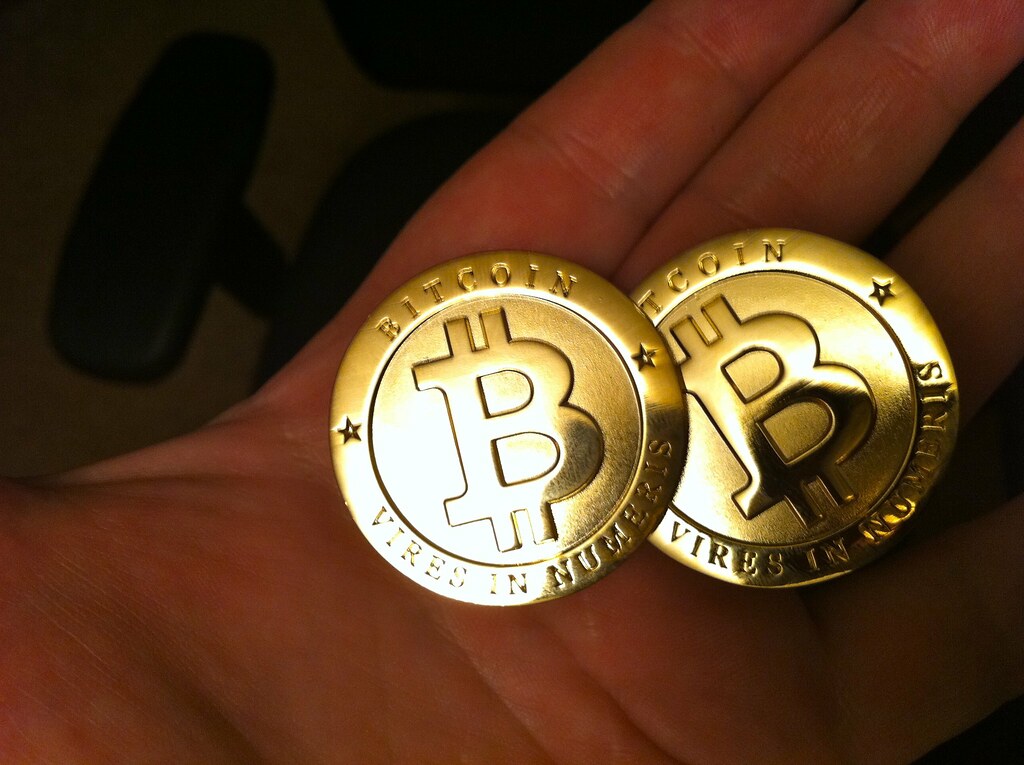Main Points:
- Czech central bank governor Ales Michl asserts that Bitcoin should not be lumped together with other cryptocurrencies.
- Recent events, including high-profile meme coin scams, have highlighted the need for clarity in the crypto ecosystem.
- The Czech National Bank is actively exploring the benefits of including Bitcoin as an alternative asset on its balance sheet.
- In-depth research into Bitcoin’s underlying technology could strengthen central banks rather than harm their stability.
- The evolving blockchain environment signals a future where differentiated roles among various crypto assets will emerge.
1. A New Chapter in the Crypto Ecosystem
The digital asset landscape is undergoing a significant transformation, with Bitcoin continuing to lead as the pioneer and gold standard in the world of cryptocurrencies. In a period marked by both remarkable innovations and tumultuous setbacks, the distinction between Bitcoin and other digital assets has never been more crucial. Recently, Czech central bank governor Ales Michl made headlines by stating that Bitcoin should not be indiscriminately grouped with other cryptocurrencies—a comment that has resonated deeply within the community. This article explores his perspective, situates it within current market developments, and examines the broader trends that are shaping the future of crypto assets.
Over the past few months, the crypto market has been a roller coaster ride of exuberance and caution. From groundbreaking institutional endorsements to episodes of high-profile scams, market participants have learned that not all digital assets are created equal. While many altcoins and meme tokens have attempted to capture the market’s imagination with flashy marketing and volatile price movements, Bitcoin remains anchored by its long-standing track record, technological resilience, and role as a store of value. This article aims to provide a comprehensive analysis of these dynamics, weaving together insights from central bank policy, recent market events, and the latest trends in blockchain technology.
2. Differentiating Bitcoin from Other Cryptocurrencies
Bitcoin as a Unique Asset
Bitcoin was the first cryptocurrency and has achieved a status that transcends its digital origins. Unlike many of its successors, Bitcoin was designed with a clear purpose: to serve as a decentralized alternative to traditional financial systems and as a hedge against inflation. Its fixed supply, robust network security, and widespread acceptance have made it a cornerstone of digital finance. Central banks, investors, and technologists recognize that Bitcoin’s underlying architecture and economic model set it apart from other crypto assets that are often characterized by speculative value and less rigorous technical frameworks.

The Misconception of Homogeneity
A major point of contention in the crypto debate is the tendency to treat all digital assets as homogeneous. Governor Michl’s assertion underscores the need to acknowledge the differences between Bitcoin and what many refer to as “altcoins.” While many alternative tokens attempt to innovate or cater to niche markets, they are often burdened by experimental models, lower security standards, and higher volatility. This homogenization not only misrepresents the strengths of Bitcoin but also leads to a distorted view of risk in the digital asset space. Understanding these distinctions is crucial for both institutional investors and regulators who aim to craft policies that nurture innovation while protecting market stability.
Technological Underpinnings
The architecture behind Bitcoin is built on decades of cryptographic research and a pioneering vision for decentralization. Its proof-of-work consensus mechanism, despite ongoing debates about energy consumption, has proven to be a reliable method for ensuring network security. Many altcoins, by contrast, have experimented with various consensus algorithms, such as proof-of-stake, which carry their own sets of risks and uncertainties. This divergence in technological approach further cements Bitcoin’s unique position in the crypto ecosystem and justifies the need for distinct regulatory and institutional treatment.
3. The Czech Central Bank’s Perspective
Policy Initiatives and Strategic Considerations
Recently, the Czech National Bank took a proactive stance by proposing the potential inclusion of Bitcoin as an alternative asset on its balance sheet. This initiative, first tabled last month and subsequently approved by the bank’s board, signifies a cautious yet forward-looking approach to integrating digital assets into traditional financial frameworks. Governor Michl has been a vocal advocate for conducting comprehensive research on Bitcoin. He emphasized that studying the underlying technology of Bitcoin is not a threat to the bank’s stability but rather an opportunity to enhance its strategic capabilities and understanding of digital finance.
Encouraging Constructive Debate
Michl’s public commentary, disseminated via a lengthy post on X (formerly known as Twitter), was intended to encourage a more nuanced conversation about the crypto market. By urging stakeholders to differentiate between Bitcoin and other crypto assets, he sought to refocus discussions on the unique benefits and challenges associated with each. His remarks came on the heels of a series of high-profile meme coin incidents, which had cast a shadow over the entire crypto sector. In doing so, the Czech central bank is not only positioning itself as a forward-thinking institution but is also calling for a more informed dialogue among policymakers, investors, and the broader public.
The Role of Central Banks in Digital Finance
The move by the Czech National Bank reflects a growing trend among central banks worldwide. Many are now exploring how digital assets can be integrated into their existing portfolios without compromising financial stability. By conducting rigorous research into Bitcoin’s technology and economic implications, central banks hope to better understand how such assets might serve as safe-haven investments or even as tools for monetary policy innovation. This cautious exploration is part of a broader strategy to harness the benefits of digital finance while mitigating associated risks.
4. Impact of Meme Coin Scams and Market Volatility
The Meme Coin Phenomenon
Recent events in the crypto market have brought meme coins and similar tokens into sharp focus. High-profile incidents—such as the alleged “rug pull” scams that followed endorsements by influential figures like Binance founder Changpeng Zhao and Argentine President Javier Milei—have underscored the inherent risks associated with untested and hype-driven assets. These events have not only led to significant financial losses for investors but have also tarnished the reputation of the broader digital asset market.
A Catalyst for Regulatory Reevaluation
The fallout from these meme coin scams has prompted regulators and institutional investors to reevaluate the current approach to digital asset categorization and risk management. Governor Michl’s comments, which clearly distinguish Bitcoin from such speculative ventures, serve as a timely reminder that not all digital assets should be treated equally. His stance reinforces the idea that rigorous research and well-informed policies are essential for safeguarding investor interests and ensuring the long-term viability of the crypto market.
Investor Caution and Market Maturity
For individual and institutional investors alike, the recent volatility in meme coin markets has been a sobering lesson in risk management. While the allure of high returns is undeniable, the underlying instability of these tokens suggests that a more measured approach is warranted. In contrast, Bitcoin’s established infrastructure and historical performance offer a more stable investment proposition. This differentiation is crucial for investors who are seeking new crypto assets or additional sources of revenue, as it underscores the need to base investment decisions on robust technological and economic fundamentals.
5. The Future of Bitcoin in Central Banking
Strategic Implications for Financial Institutions
As central banks around the globe consider the potential benefits of integrating Bitcoin into their balance sheets, the implications for traditional financial institutions are profound. The Czech National Bank’s initiative is reflective of a broader trend where central banks are increasingly viewing digital assets not as a threat, but as a strategic asset that can enhance financial resilience. By including Bitcoin as part of their alternative asset portfolios, central banks can potentially hedge against inflation, diversify their holdings, and gain valuable insights into emerging financial technologies.
Research as a Pillar of Stability
Central to this strategic shift is the commitment to rigorous research. Governor Michl has consistently emphasized that understanding Bitcoin’s underlying technology is essential for both safeguarding and enhancing the institution’s operational capabilities. This research-driven approach ensures that any integration of digital assets into traditional financial systems is grounded in empirical analysis rather than speculative hype. Moreover, it provides central banks with a framework for assessing risks and implementing policies that balance innovation with stability.
Global Perspectives and Comparative Analysis
Other central banks, such as those in Switzerland and Japan, have similarly initiated studies into digital asset integration, albeit at varying degrees of progress and enthusiasm. The global trend indicates that a cautious yet open-minded approach is being adopted across the board. As each institution navigates its own regulatory and economic landscapes, the lessons learned from these research endeavors will undoubtedly shape the future of digital finance. The Czech National Bank’s proactive stance serves as an instructive example for other central banks contemplating similar moves.
6. Broader Blockchain and Crypto Trends
The Rise of Institutional Adoption
One of the most significant trends in recent years has been the increasing involvement of institutional investors in the crypto market. With Bitcoin’s reputation as a relatively stable asset, many institutions are now considering it as a viable addition to their portfolios. This trend is supported by rigorous research and policy initiatives from central banks around the world, which are beginning to recognize the strategic value of digital assets in the context of global financial markets.
Technological Innovations and Ecosystem Maturation
Beyond institutional adoption, the broader blockchain ecosystem continues to mature at a rapid pace. Advances in blockchain technology, ranging from improved scalability solutions to enhanced security protocols, are helping to address many of the issues that have plagued earlier crypto projects. These technological breakthroughs are paving the way for more efficient, secure, and user-friendly applications, thereby increasing the overall reliability of the digital asset market.
Regulatory Developments and Future Outlook
Regulatory frameworks around the world are evolving in response to the rapid growth of digital assets. While meme coin scams and other fraudulent activities have raised concerns about investor protection, these challenges have also spurred regulatory bodies to develop more robust oversight mechanisms. In the near future, we can expect to see more harmonized international standards and policies that aim to foster innovation while minimizing risk. This regulatory evolution, combined with technological advancements and increased institutional involvement, paints a promising picture for the long-term growth and stability of the crypto ecosystem.
7. Conclusion and Final Summary
In summary, the evolving crypto landscape demands a nuanced understanding of the distinct roles played by various digital assets. Bitcoin, as the pioneering cryptocurrency, stands apart from its more speculative counterparts. The insights of Czech central bank governor Ales Michl highlight the importance of differentiating Bitcoin from other altcoins, emphasizing rigorous research and the strategic integration of digital assets into traditional financial frameworks. The recent turbulence caused by meme coin scams has further underscored the necessity for well-informed policies and investor caution.
As central banks and financial institutions globally continue to explore the potential benefits of Bitcoin and other digital assets, it is clear that a one-size-fits-all approach is not only misguided but potentially detrimental. The research and analysis undertaken by institutions such as the Czech National Bank pave the way for a more mature, secure, and resilient digital asset market. By embracing innovation while upholding stringent research standards, the future of crypto appears both promising and robust.
This article has provided an in-depth analysis of current market trends, central bank strategies, and technological developments within the blockchain ecosystem. For those exploring new digital assets, seeking additional revenue streams, or interested in practical blockchain applications, the evolving narrative around Bitcoin and its differentiation from other cryptocurrencies offers valuable insights and a roadmap for the future.


